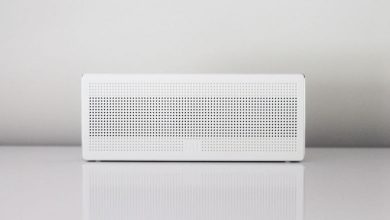What Are Some Smart Building Materials for a Green Home?

Building a green home is not only an environmentally conscious decision but also a smart one. With the increasing concern for sustainability and energy efficiency, smart building materials have become a popular choice for homeowners. These materials not only help reduce the carbon footprint of a home but also provide several other benefits such as improved indoor air quality and reduced energy consumption. In this article, we will explore some of the smart building materials that can be used to create a green home.
Insulated Concrete Forms (ICFs)
Insulated Concrete Forms, or ICFs, are an innovative building material that combines the strength of concrete with the insulation properties of foam. These forms consist of two layers of expanded polystyrene (EPS) foam, which are connected by a webbing system. Once the forms are assembled and filled with concrete, they create a solid and well-insulated wall system.
ICFs offer several advantages over traditional building materials. Firstly, they provide excellent insulation, which helps to reduce heating and cooling costs. Additionally, the high thermal mass of concrete helps to stabilize indoor temperatures, reducing the need for mechanical heating and cooling systems. Moreover, ICFs are resistant to mold, mildew, and pests, making them a durable and low-maintenance option for a green home.
Recycled Steel
Steel is one of the most durable and versatile building materials available today. When used in construction, it offers strength, stability, and resistance to fire, pests, and extreme weather conditions. However, traditional steel production is resource-intensive and has a significant carbon footprint. That’s where recycled steel comes in.
Recycled steel is made from scrap metal, reducing the need for new steel production and the associated environmental impact. It can be used for various applications in a green home, including framing, roofing, and cladding. Additionally, recycled steel is recyclable, which means it can be reused at the end of its lifecycle, further reducing waste.
Bamboo
Bamboo is a fast-growing grass that has gained popularity as a sustainable building material. It is a renewable resource that can be harvested in just a few years, unlike traditional hardwoods that take decades to grow. Bamboo is known for its strength, flexibility, and natural beauty, making it an ideal choice for flooring, cabinetry, and furniture.
In addition to its sustainability, bamboo offers several other benefits. It is naturally resistant to pests and diseases, reducing the need for chemical treatments. Bamboo also absorbs more carbon dioxide and releases more oxygen than other plants, helping to mitigate climate change. Furthermore, bamboo is a low-maintenance material that can withstand wear and tear, making it a durable option for a green home.
Solar Panels
Solar panels are a popular choice for homeowners looking to reduce their reliance on fossil fuels and lower their electricity bills. These panels convert sunlight into electricity, providing a clean and renewable source of power. Solar panels can be installed on rooftops or integrated into building materials such as solar shingles or solar windows.
By harnessing the power of the sun, solar panels help to reduce greenhouse gas emissions and combat climate change. They also offer long-term cost savings by generating free electricity and potentially allowing homeowners to sell excess power back to the grid. Furthermore, solar panels require minimal maintenance and can last for several decades, making them a smart investment for a green home.
Conclusion: Building a Green Home with Smart Materials
Creating a green home involves making conscious choices about the materials used in construction. Insulated Concrete Forms, recycled steel, bamboo, and solar panels are just a few examples of smart building materials that can contribute to a sustainable and energy-efficient home. By incorporating these materials into the design and construction process, homeowners can not only reduce their environmental impact but also enjoy the benefits of improved indoor air quality, reduced energy consumption, and long-term cost savings.




